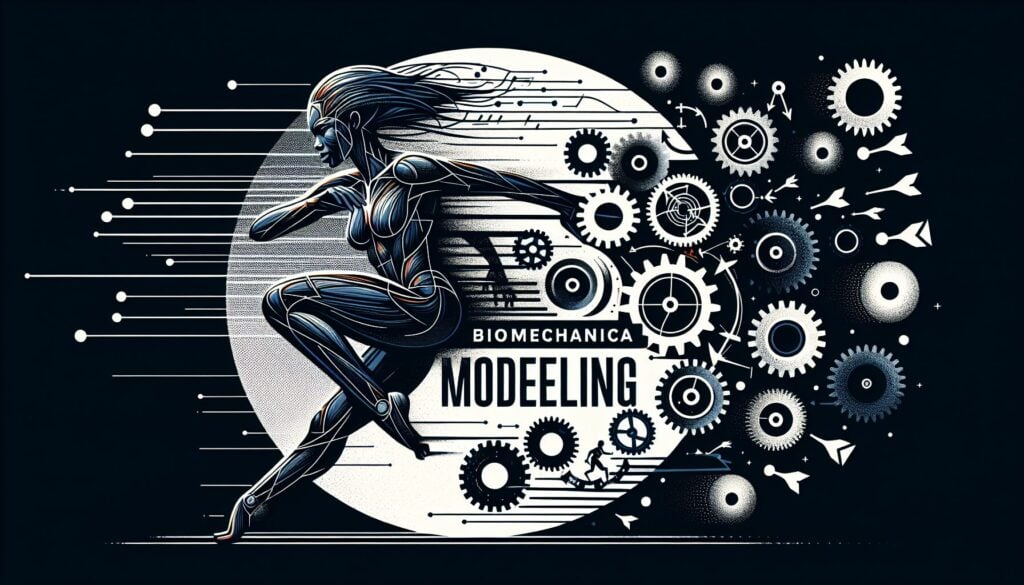The use of mechanical principles (physics, engineering) to analyze the forces and stresses acting on and within the human body during physical activities.
- المنهجيات: الهندسة, بيئة العمل
Biomechanical Modeling

Biomechanical Modeling
- التصميم من أجل الاستدامة, بيئة العمل, العوامل البشرية, الهندسة الميكانيكية, إدارة المخاطر, المحاكاة, التآكل الناتج عن الإجهاد
الهدف:
كيفية استخدامه:
- Computer models or mathematical equations are used to simulate human movement and calculate internal forces (e.g., on joints, spine) during tasks like lifting, pushing, or carrying.
الايجابيات
- Allows for quantitative estimation of internal biomechanical loads that cannot be directly measured; helps understand injury mechanisms and evaluate the effectiveness of ergonomic interventions; can analyze complex movements.
سلبيات
- Models are simplifications of the complex human body and require assumptions; accuracy depends on the quality of input data and model validity; can be complex and require specialized software and expertise.
الفئات:
- الهندسة, بيئة العمل
الأفضل لـ
- Analyzing the mechanical forces and stresses on the human body during work tasks to assess injury risk and optimize design.
Biomechanical modeling encompasses a range of applications across various sectors, including healthcare, sports science, and industrial ergonomics, where understanding human movement and forces is paramount. In healthcare, this methodology assists in designing rehabilitation programs by simulating patient movements to tailor interventions appropriately, thereby enhancing recovery outcomes. In sports science, teams leverage biomechanical models to optimize athletic performance, allowing coaches to analyze athletes’ techniques for improved efficiency and reduced injury risk during training and competition. Industrial ergonomics employs this approach during the product design phase, particularly in the development of tools, furniture, or workflows that mitigate physical stress on workers. Participants in these projects typically include biomechanical engineers, ergonomists, health and safety professionals, and product designers, working collaboratively to ensure designs meet ergonomic standards while addressing user needs. This modeling can also be particularly beneficial during early concept evaluations, allowing for rapid iterations and refinements based on simulated feedback, and is often used alongside experimental methods to validate findings through real-world testing.
الخطوات الرئيسية لهذه المنهجية
- Define the biomechanical problem and task scenario, including motion parameters and loading conditions.
- Develop a detailed geometric model of the human anatomical structures involved, such as bones, muscles, and joints.
- Specify material properties for the anatomical components based on literature values or experimental data.
- Select an appropriate biomechanical modeling software or mathematical framework for simulation.
- Create or input the kinematic data and boundary conditions relevant to the task being analyzed.
- Set up the dynamic or quasi-static analysis, determining the necessary parameters for simulation.
- Run the simulation to compute internal forces, moments, and stresses in the anatomical structures.
- Validate the model by comparing simulation results with available empirical data or observed outcomes.
- Interpret results to identify potential injury risks and evaluate the impact of different task designs or ergonomics.
- Iterate on the design or task parameters based on findings to optimize for safety and efficiency.
نصائح للمحترفين
- Utilize advanced العنصر المحدود analysis (FEA) to model soft tissue interactions and provide a more comprehensive understanding of force distributions in various tissues during dynamic movements.
- Incorporate real-time motion capture data to refine your computational models for accuracy, allowing for better validation and predictive capabilities regarding individual variability in movement patterns.
- Implement sensitivity analysis within your models to identify which parameters most significantly influence biomechanical outcomes, guiding the focus of ergonomic interventions and design modifications.
لقراءة عدة منهجيات ومقارنتها, نوصي باستخدام
> مستودع المنهجيات الشامل <
مع أكثر من 400 منهجية أخرى.
نرحب بتعليقاتكم على هذه المنهجية أو المعلومات الإضافية على قسم التعليقات أدناه ↓، وكذلك أي أفكار أو روابط متعلقة بالهندسة.
السياق التاريخي
1687
1750
1788
1800
1800
1800
1810
1687
1738
1757
1788
1800
1800
1800
1820
(إذا كان التاريخ غير معروف أو غير ذي صلة، على سبيل المثال "ميكانيكا الموائع"، يتم تقديم تقدير تقريبي لظهوره الملحوظ)















منشورات ذات صلة
محاكاة مونت كارلو
الاختبار المستند إلى النموذج
التحقق من النموذج
بحوث الأساليب المختلطة
تدقيق الأخطاء (بوكا يوك)
اختبار الملف الشخصي للمهمة